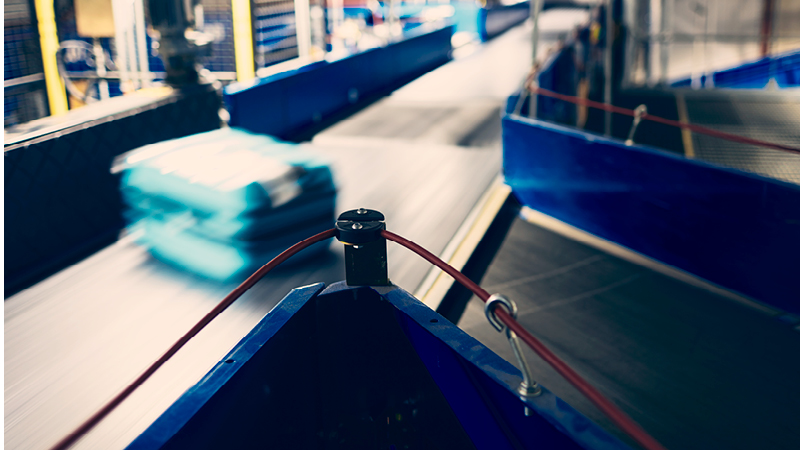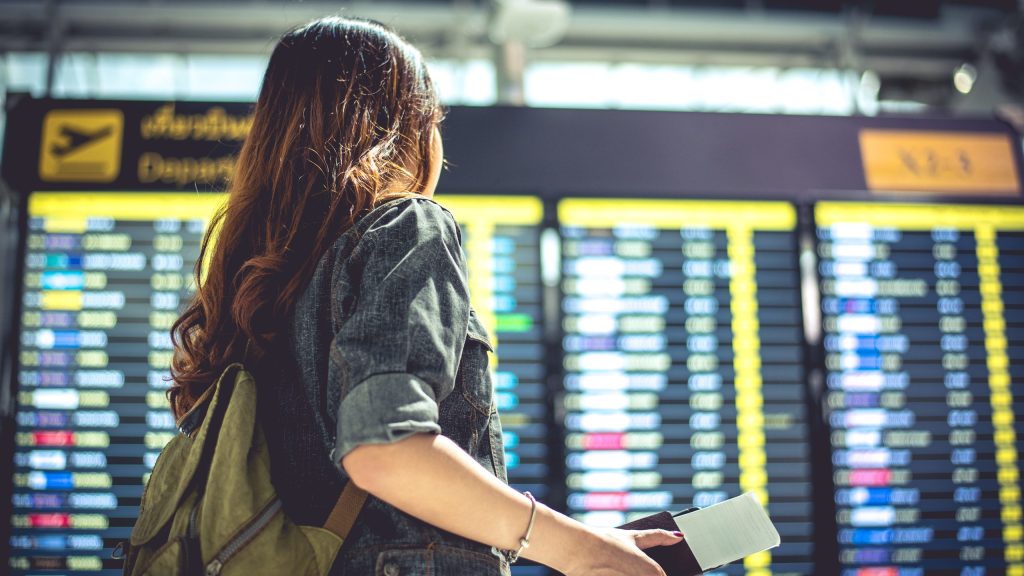Through the Lens of a Baggage Handling System Sales Application Engineer
by Cassandra McAllister
Just like an airport baggage handling system, many of the employees who make the systems work are behind the scenes. In fact, each baggage handling system has countless employees that passengers do not see. They work diligently to design, plan, manufacture, install, operate and maintain the system to ensure passenger bags arrive on time, every time. For an inside look at a Sales Application Engineer’s role in the aviation industry—and specifically within BHS—read about Saad Khan’s journey at Miami International Airport where he had hands-on new-employee training at a world-class system.

A few weeks ago, I boarded a flight from Detroit to Miami International Airport (MIA). I was traveling to my first working site-visit at an airport since beginning my new position as a Sales Application Engineer. I was hoping to catch a quick nap onboard, as I knew my working hours would be drastically different from what they are back in the office. When I arrived, I had no meeting destination. I didn’t even have to leave the airport. I was going to a place that not many people even know exists—the baggage handling system (BHS). When I told my friends and family I would be traveling to Miami for work, they envied that I was escaping the Michigan cold. Little did they know, I stayed at the airport through the night until the sun came up. I would meet my coworkers at the airport late in the afternoon and worked through the night and into the morning for the next four days.
On average, MIA has over 125,000 passengers fly through each day. However, the least amount of passenger traffic happens in the middle of the night, which means the baggage handling system is relatively empty during this time. As a result, this was the best time to work on the BHS without baggage interrupting you throughout. While I knew there would be a few late nights over the following days, I was looking forward to gaining hands-on experience at Miami’s new $324 million state-of-the-art baggage handling system project which also included the largest Mobile Inspection Table (MIT) installation in the world. Since joining Daifuku, I had seen the MITs in use—but never to the capacity of MIA.
After receiving a comprehensive tour of the entire baggage handling system, I had a better understanding of the massive upgrades MIA undertook. While the system is not entirely upgraded yet, I saw the major improvements that have already been completed. I also had a thorough explanation of the upgrades that are to come in the following weeks and months. Over the next few days, I was paired with a Field Engineer from MIA. He went through an entire series of hands-on training throughout various parts of the BHS.
Tuesday Night – Wednesday Morning:
The field engineer I shadowed, Justin Cusumano, went over the mechanical installation related to ticket counters 14 and 15. These are part of the Central Terminal BHS. The ticket counters serve as the initial entry point for a checked bag to enter the BHS. During our site walk through the baggage handling area, Justin explained to me how conveyor lines of ticket counters 12, 13 and 14 would eventually merge into ticket counter 15’s conveyor line. This would carry the bags through TSA baggage check (CBRA/CBIS), which is where bags are inspected. Later the same night, we conducted an inspection on conveyor belts and high-speed diverters. This is how bags are moved and sorted to their correct location during their journey through the BHS. As we inspected each item, we noted our findings on Mechanical Static Inspection Sheets for each equipment. These sheets are comprehensive checklists that need to be completed before turning over finished conveyor lines to the customer. After a long day and night of working, I was eager to get back to my hotel for some rest.
Wednesday Night – Thursday Morning:
Once I had a restful day’s sleep, I was looking forward to getting back to the airport. I learned so much about the BHS and was ready to gain more knowledge and experience from Justin. The following night, Justin went over the mechanical installation of the conveyor line for ticket counter 20 in the Central Terminal’s BHS area. We also conducted a Speed Change Test for motors on the conveyor. This is done on an old-style motor without a variable speed drive (VSD) for conveyors that are being reused. Furthermore, under Justin’s supervision, I completed static inspections for an automated tag reader (ATR) and a belt conveyor. It was empowering to complete this on my own. It really gave me confidence in the skills I was learning.
Thursday Night – Friday Morning:
On the last night of my visit, Justin took the opportunity to go deeper into my training. He went over the lacing process for the conveyor belts. This is an essential part of installing a belt onto the conveyor. Through lacing, two ends of the belt can be conjoined around the belt in a closed loop. With Justin’s guidance, I was also able to complete Mechanical Static Inspection for fire security doors, slope plate carousels, and a Vertical Sort Unit.
Overall, I had an incredibly valuable experience during a short time in Miami. I truly believe there is no better way to learn something than by doing it. Hands-on learning provides an opportunity to receive both instant feedback and reinforcement. It also allows an individual to make the transition from the ‘what’ behind a task, and learn the ‘how’ and ‘why’. Not only is this vital in all industries, but it’s also specifically important in the baggage handling industry as much of the work is done behind the scenes.
It was fascinating to see the intricacies of the BHS. Before, I had only ever looked at CAD drawing and design plans. It was eye-opening to see the system in person and witness how every piece, no matter how big or small, works together to create a massive and robust BHS.
Being beneath the airport is a place that many people never get to see. However, I believe almost anyone would be impressed with the comprehensive system which transports bags from the ticket counter all the way to the plane. The bag travels over miles of conveyor through screening and inspection, and is brought to the exact right place of the airport and delivered to the correct plane—all within the time it takes passengers to go through security and get settled on their plane. This is something people rarely think about. In fact, many travelers often only focus on their trip and pay little to no attention to their bag after dropping it off. To me, this is an incredible journey and one that I am proud to help support.
About the Author:
Saad Khan joined Daifuku Airport Technologies as a Sales Application Engineer in early fall, 2019. He graduated from Florida International University with a degree in Mechanical Engineering. Previously, he worked in the competitive automotive industry as a Sales Engineer for Toyota Boshoku. Saad is looking forward to using his previous skills and expanding his knowledge as he dives into the aviation industry, specifically with baggage handling systems.
Related articles
Apr 17, 2024 • 3 min read
rapidhub: Revolutionising Airport Operations with Advanced Data Integration
Apr 17, 2024 • 4 min read
rapidfids: Intuitive Flight Information Displays
Never miss an article
Subscribe to our newsletter and be the first in the know.
Join the conversation
For the latest industry articles and networking

